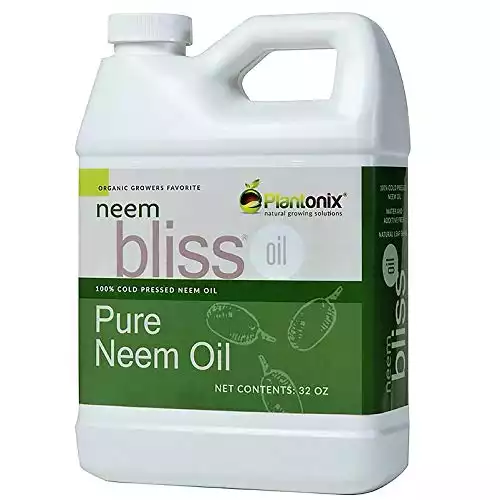Let’s be real, aphids are the glitter of the garden.
You find one, and an hour later there are hundreds. And they’re not super easy to get rid of, just like glitter, you’ll be finding them for weeks and months after.
Aphids are commonly called “little green bugs”, but I like to call them “little green garden pests that won’t go away.” Safe to say, controlling aphids is a difficult task.
Aphid Snapshot
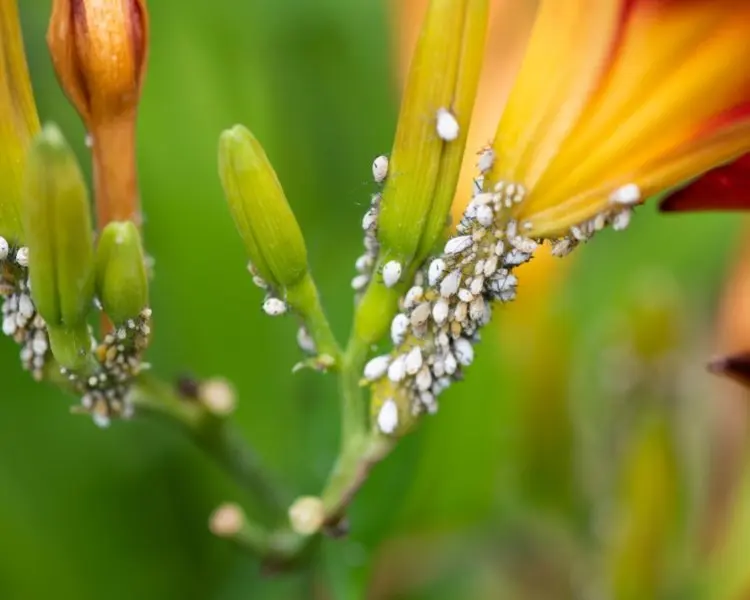
Common Names: plant louse, greenfly, ant cow, little green bugs
Colors: Green, white, tan, black
Scientific name: Aphidoidea
Controlling aphids is a job every gardener dreads.
What is an Aphid?
Aphids are tiny, soft-bodied insects belonging to the superfamily Aphidoidea. Aphids range from 1/16 to 1/4 inch long and vary widely in color depending on the species.
Green aphids blend in so well with leaves and stems that they tend to go unnoticed. Some aphids even have wings, which makes it easy to mistake them for other pests. And aphid eggs are even smaller, making them even harder to identify until it’s too late. Because they go unnoticed quite often, aphids multiply quickly.
Though they may be small and seemingly insignificant compared to other insects, they thrive by the sheer force of their numbers. Again, with the glitter thing.
Why Are Aphids Such a Pest?
Aphids are so small, there’s not way can cause that much damage, right?
Wrong.
While aphids are small bugs, they can cause direct damage, spread disease to other plants, and leave behind a sticky film called honeydew which will quickly turn into a black sooty mold that can further devastate your plant.
Not to mention, they multiply like crazy. Each aphid can produce up to 80 offspring in a single week, and those offspring go from nymph to adult aphids in 7-8 days.
How to Get Rid of Aphids Permanently
Controlling aphid populations can be done without harmful chemicals. Here are a few ways you can remove aphids and keep their populations under control.
1. Introduce Beneficial Insects
Beneficial insects are essentially insects that eat the pests in your garden. If you can attract beneficial insects, these predatory insects don’t harm plants, but they do eat the ones that harm your otherwise healthy plants.
Ladybugs / Lady Beetles
Ladybugs are natural predators to most aphid species so they are beneficial bugs. Ladybugs eat aphids and are a great organic aphid control. While it might be tempting to just order some ladybugs on Amazon (yes, this is a real thing), I wouldn’t recommend it.
While you might laugh at this sight – seeing multiples is a great thing! They’re creating more aphid-eaters! 🙂
I’ve seen so many stories of people ordering ladybugs and then within a few hours, they’ve all flown away. This could be because people release them during the day when this should be done at night or dusk.
Or you get a shipment of Asian lady beetles which are much more of a pest than ladybugs.
Lady beetles (ladybugs) are great if you have them. You can also add plants to your garden that attract ladybugs like marigolds, dahlias, daisies, asters, calendula, tansies, zinnia, and sunflowers. Another benefit of companion planting that works well!
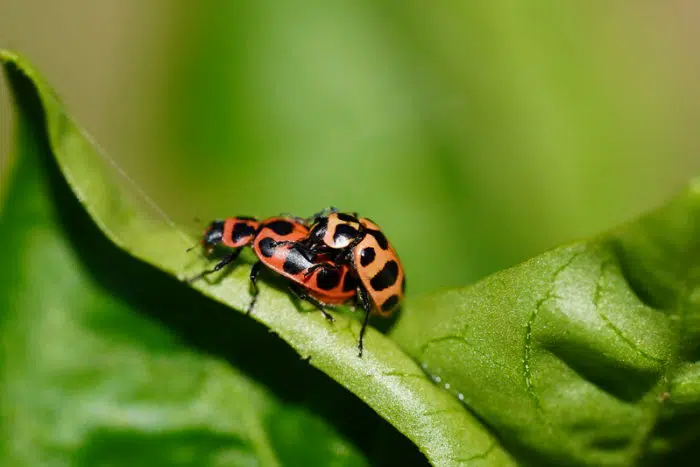
Adult (ladybugs) don’t eat nearly as many aphids as ladybug larvae do. There needs to be a large enough aphid population to keep the ladybugs fed long enough to mate and lay eggs.
Parasitic Wasps
Parasitic wasps will happily help you control aphids and enjoy their meal. They’re a little creepy looking if you’re scared of bees, but these guys are almost always harmless to humans. Very few can sting and even the ones that can don’t do so often.
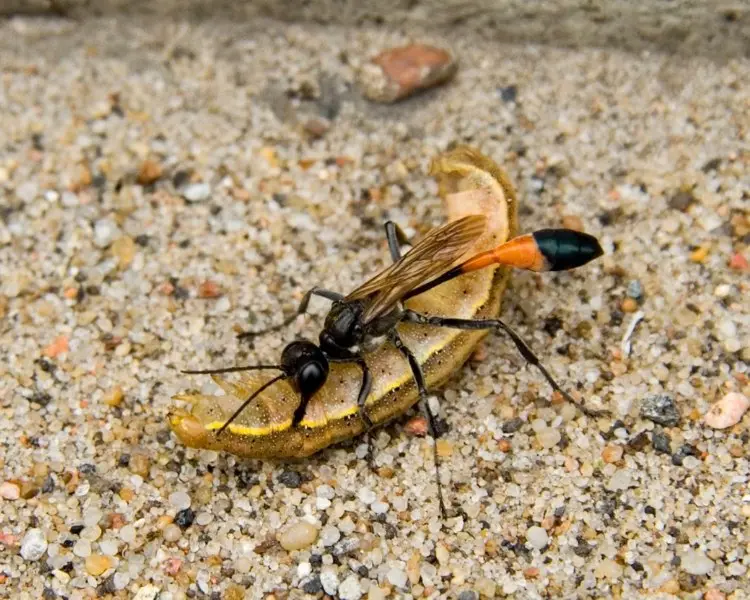
These wasps are a beneficial insect that kill aphids, but also feet on cutworms, corn earworms, and other caterpillars.
Lacewings
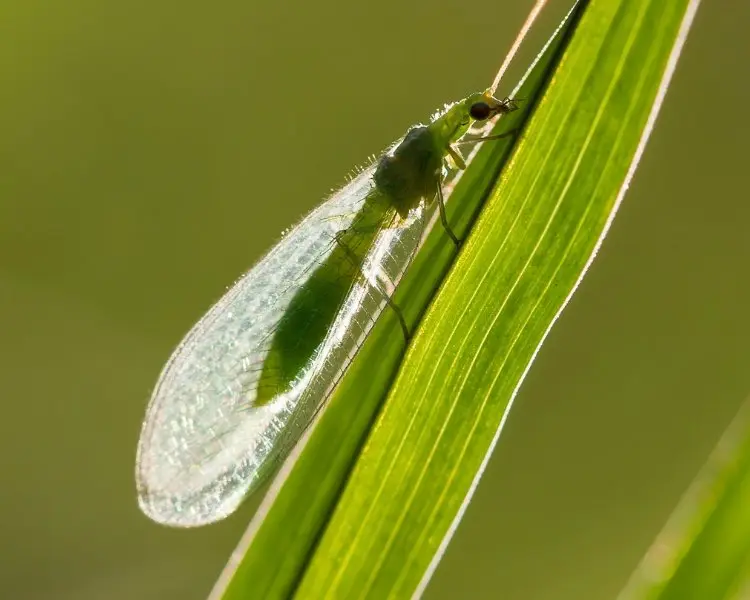
Lacewings are another type of beneficial insect. They love eating aphids, cabbage worms, and mealy bugs as well – so they are a great asset to your garden if you’re looking for organic pest control.
Hoverflies
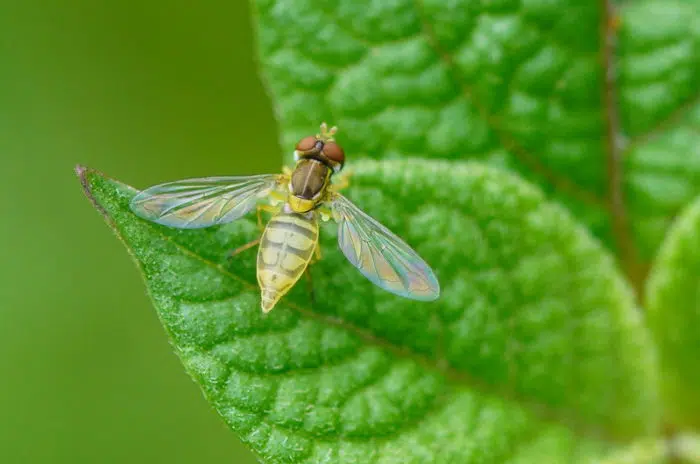
These guys are really fun to watch. At first, I thought they were harmful, but they are definitely not. The adults might help pollinate your plants and flowers. But the larvae are the real hard workers! They roam around on the underside of leaves and munch on aphids.
2. Neem Oil
Neem oil is an organic insecticide made from the oils of the neem tree – pretty self-explanatory 🙂 It can help mitigate an aphid infestation and get rid of aphids pretty quickly.
Neem oil is It’s got a deep yellow color and smells kind of like garlic in a way. As long as you thoroughly cover the leaves and stems of your plants, it will smother aphids and can help deter aphids from laying eggs there.
Neem oil should be reapplied every 1-2 weeks (1 week if you already have an infestation) or if it rains heavily.
It will not impact the beneficial insects in your garden – this was my main concern in buying it. I didn’t want to kill the awesome ladybugs, but I do want to get rid of my aphid infestation – and it did just that!
100% cold-pressed neem oil that can be used as a foliar spray for healthy garden plants. Free of water and other additives.
3. Diatomaceous Earth
Diatomaceous earth is one of my favorite ways to get rid of unwanted pests. It will not harm worms but will help kill aphids.
One thing to know is that it could harm bees and butterflies, so I wouldn’t put this on your pollinator plants.
4. Soapy Water
Insecticidal soap is a low-toxicity bug control solution. Mix a few teaspoons of liquid dish soap (castille soap or dish soap, but NOT a detergent) with one quart of water.
Spray or wipe the solution onto the leaves, stems, and buds of the plant. Repeat the process every two or three days for the next few weeks, until you no longer notice aphids on the plant. These bugs like to hide beneath leaves, so take care to thoroughly coat the underside of the leaves and underside of them, too. Repeat the same process every 2 or 3 days for a few weeks.
5. Nematodes
There is an aphid breed called “root aphids” and they live in the soil. Most of these other solutions won’t work on root aphids, but you can use nematodes to get rid of root aphids. You can order them online and sprinkle them around your yard as needed. Since they are live, you will need to refrigerate them.
What do Aphids Eat?
Aphids will feed on all the plants you don’t want them to. Some of these include:
- Arugula
- Banana Peppers
- Basil
- Beans
- Bell Peppers
- Brussels Sprouts
- Cabbage
- Cilantro
- Cucumbers
- Dill
- Fennel
- Ginger
Aphids eat the sap from the leaves of plants and trees. This is why they can do so much damage. They’re essentially sucking the plant dry, so if you don’t catch them early, they can turn the leaves yellow and eventually kill the plant.
Water Pressure
Use a strong stream of water from a garden hose to spray aphids off of plants. This method is most effective early on in the season before an infestation has fully taken hold. It may not be a good choice for younger or more delicate plants, but it works well on plants where you can use higher water pressure.
Types of Aphids
There are over 4,000 species of aphids, but here are some of the more common ones. Most aphids can be found across a variety of plants, eating the sap and leaving behind damage when they’re gone.
| Type | Scientific Name | Image | |
| Wooly Aphids | Adelges laricis | 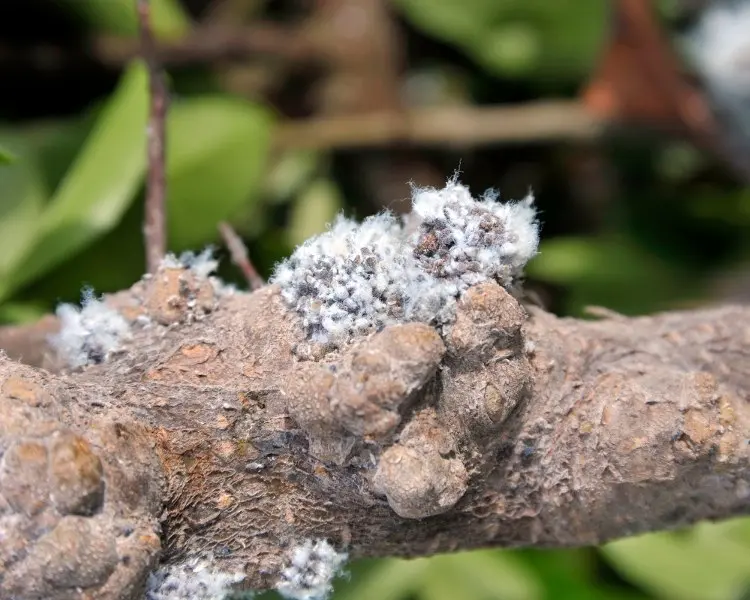 | |
| Root Aphid | Pemphigus betae | ||
| Green Peach Aphids | Myzus persicae | 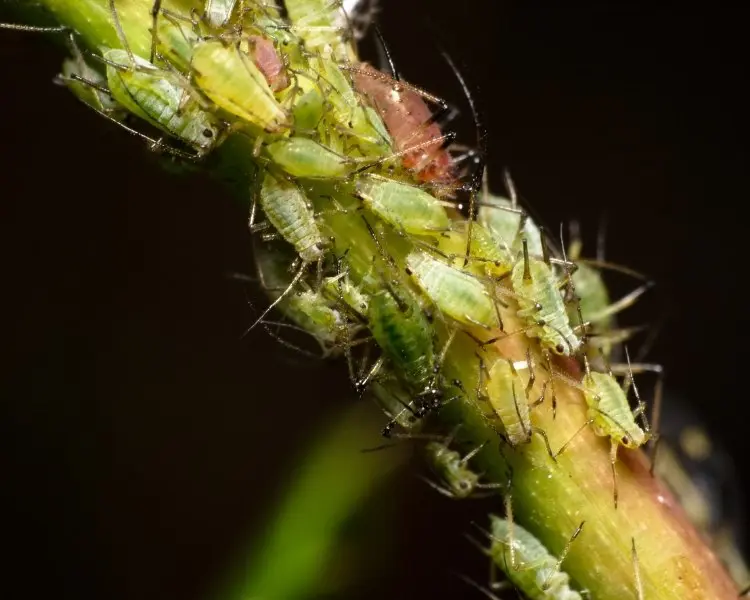 | |
| Oleander Aphids | Aphis nerii | 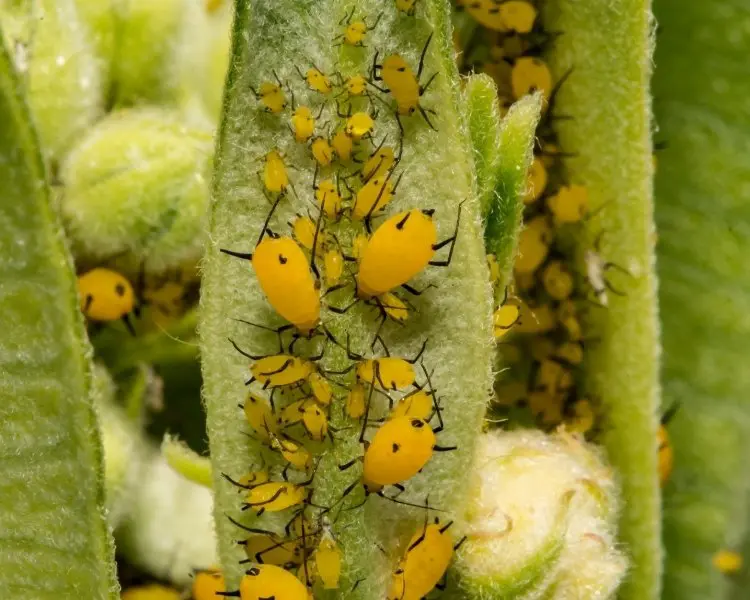 | |
| Pea Aphids | Acyrthosiphon pisum | 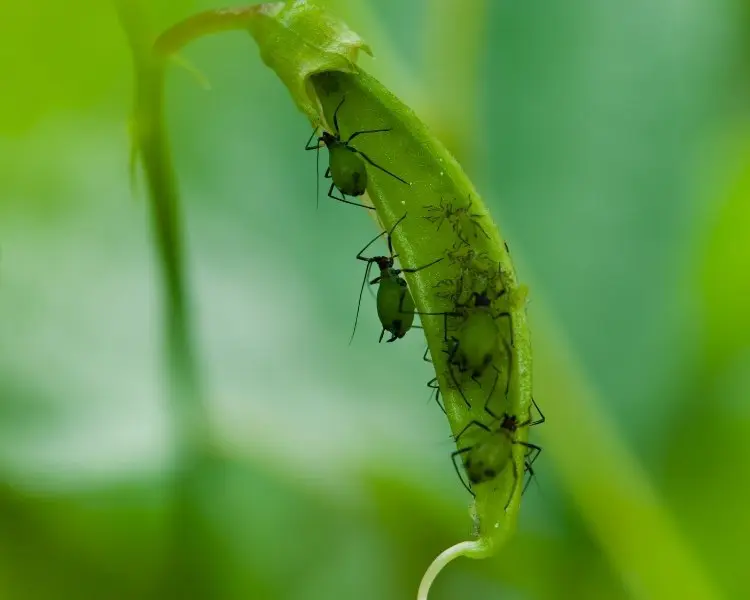 | |
| Cabbage Aphids | Brevicoryne brassicae | 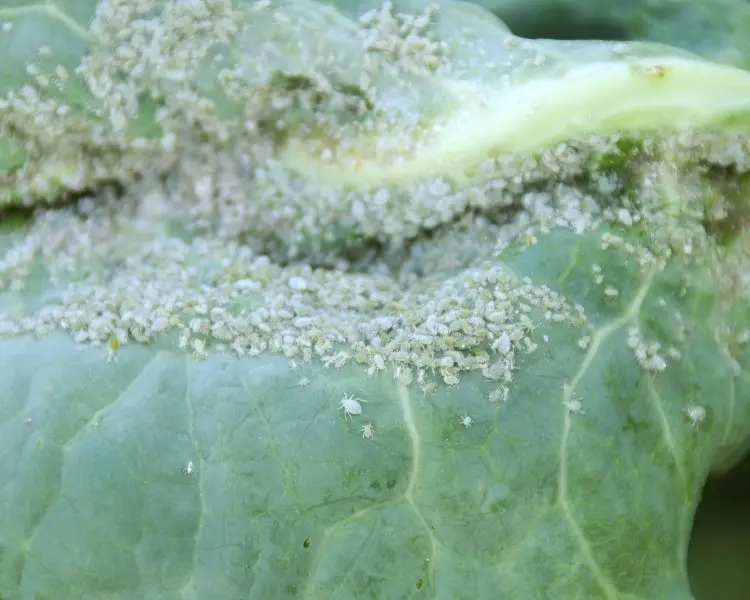 | |
| Black Willow Aphids | Pterocomma salicis | 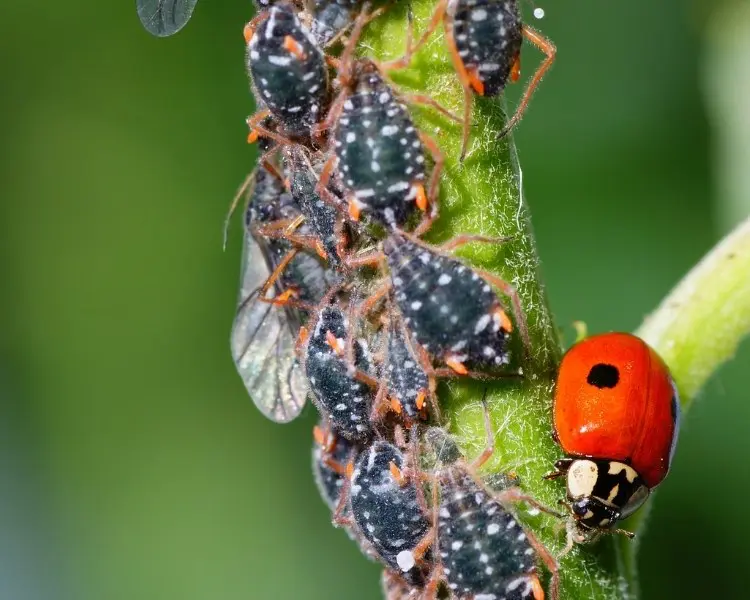 | |
| Rose Aphids | Macrosiphum rosae | 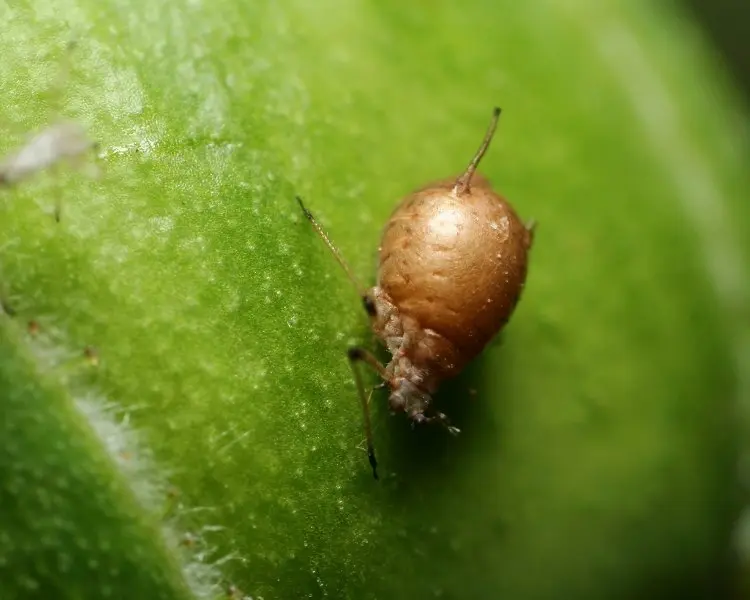 | |
| Potato Aphids | Myzus persicae | 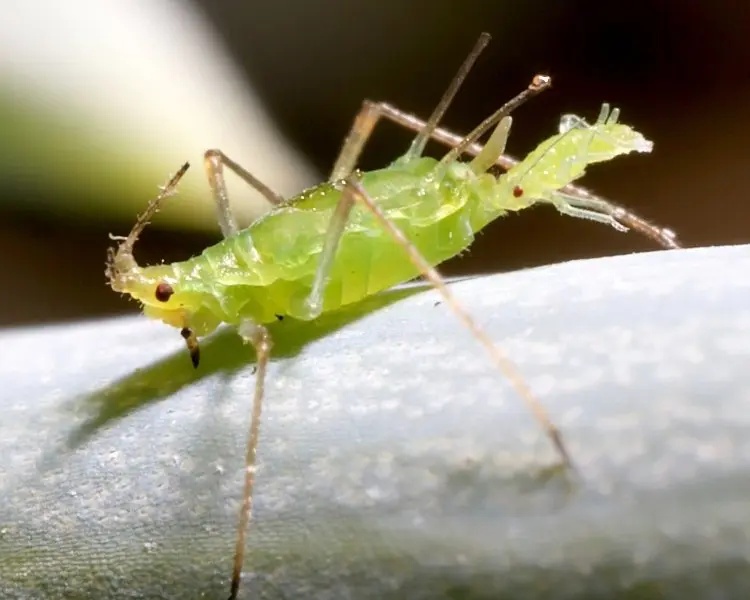 | |
| Melon Aphids | Aphis gossypii | ||
| Bean Aphids | Aphis fabae | 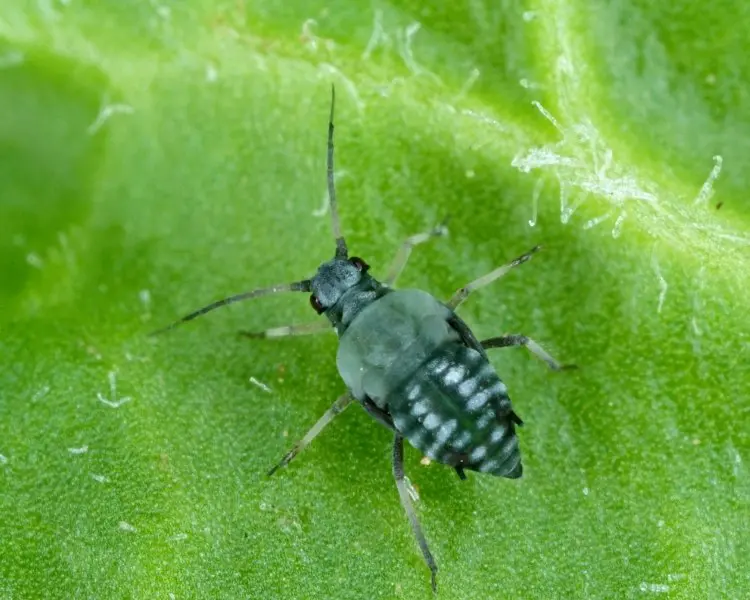 |
How to prevent or get rid of aphids naturally
Keeping aphids off your plants starts with keeping them out of your yard in the first place. Prevention is easier than intervention, but it’s possible to get rid of aphids permanently without nasty chemicals. When one of these natural control measures is used early and effectively, plants can recover from aphids and go on to have productive yields.
This is where you catch an invasion early, before the colony has multiplied and become unmanageable. The hardest part of killing aphids is catching them early and killing them early, so get in the habit of inspecting your plants regularly.


